Scheme type
AMC
Risk appetite
Rating
Returns



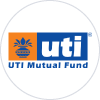
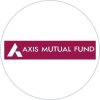


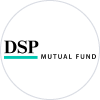
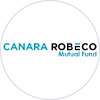



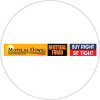



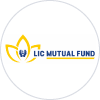
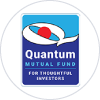

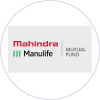






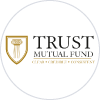

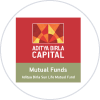

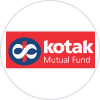
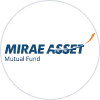
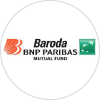
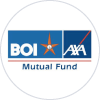

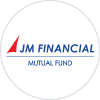
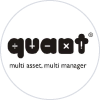
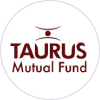

Frequently asked questions
How is an aggressive hybrid fund taxed?
Equity-oriented aggressive hybrid funds are taxed at 20% STCG and 12.5% LTCG for income above Rs. 1.25 lakh. Debt-oriented aggressive hybrid funds attract the same taxes as debt funds, and the STCG is added to the investor’s gross income and taxed at the slab rate under which they fall. The LTCG is taxed at 20% along with indexation.
Is it good to invest in an aggressive hybrid fund?
Investing in aggressive hybrid funds may be considered a favourable option depending on the investor’s financial goals, investment horizon, and risk tolerance. However, they also need to consider other factors like balanced risks and returns, the advantages of diversification and professional fund management, and the simplified investment that comes with it.
What is the exit load for an aggressive hybrid fund?
The exit load for an aggressive hybrid fund varies depending on the particular fund and the house that manages it. The mutual fund charges an exit load when the investor exits it before a specified period. The fee is charged to discourage short-term trading and for protecting long-term investor interests.
Should I invest in aggressive mutual funds?
Investments in aggressive mutual funds depend on several factors, such as the investor’s financial goals, investment horizon, risk tolerance, and overall investment strategy. The top aggressive hybrid funds are suitable investment options for investors who seek higher growth potential with higher risk levels.
What are the expected returns of aggressive hybrid funds?
Expected returns in India vary since they depend on factors such as asset allocation, market conditions, economic outlook, and fund management.
What are the risks involved in investing in aggressive mutual funds?
The key risks associated with investing in aggressive mutual funds are related to market volatility, interest rates, liquidity, credit, management, inflation, and asset allocation.
What are the top aggressive hybrid mutual funds for investment in 2025?
Aggressive hybrid funds balance equity and debt exposure, offering growth potential with risk mitigation. Some of the top aggressive hybrid funds for 2025 include:
- SBI Equity Hybrid Fund – Recently moved from the bottom quartile to the third quartile, showing improving performance.
- Mirae Asset Hybrid Equity Fund – Maintained a fourth-quartile ranking for the past four months, previously in the third quartile.
- Canara Robeco Equity Hybrid Fund – Consistently held a third-quartile ranking for 22 months.
- ICICI Prudential Equity & Debt Fund
- Quant Absolute Fund
Which is better: Balanced Advantage Fund or Aggressive Hybrid Fund?
Both funds combine equity and debt investments but follow different strategies. Balanced Advantage Funds dynamically adjust allocations based on market conditions, aiming to manage risks better. Aggressive Hybrid Funds, on the other hand, maintain a fixed allocation (65-80% in equities and 20-35% in debt), offering consistency but higher exposure to market fluctuations. If you prefer flexibility, Balanced Advantage Funds may be ideal, whereas Aggressive Hybrid Funds suit those seeking long-term equity growth with some risk cushioning.
What is the typical allocation of an Aggressive Hybrid Fund?
As per SEBI regulations, Aggressive Hybrid Funds are required to invest 65-80% of their assets in equities or equity-linked instruments and 20-35% in debt securities. This structured asset allocation helps balance risk and return by leveraging stock market growth while stabilising the portfolio with debt investments.
What is the risk rating of an Aggressive Hybrid Mutual Fund?
Since 65-80% of an Aggressive Hybrid Fund’s portfolio is invested in equities, it carries a medium to high risk. The exact risk level depends on the fund manager’s asset allocation strategy and the market conditions. While the debt component helps reduce volatility, these funds can experience significant fluctuations, especially during bearish market phases.
How long should I stay invested in Aggressive Hybrid Mutual Funds?
To maximise returns from Aggressive Hybrid Funds, a minimum investment horizon of 3-5 years is recommended. Since these funds have a major equity allocation (at least 65%), they require time to absorb market fluctuations and deliver stable long-term returns. Short-term investments may expose investors to volatility, reducing the effectiveness of the fund’s balanced approach.
Where do Aggressive Hybrid Mutual Funds invest?
Aggressive Hybrid Funds allocate 65-80% of assets to equities and 20-35% to debt. Within equities, fund managers typically diversify across large, mid, and small-cap stocks spanning various sectors. The debt component can include government bonds, corporate bonds, treasury bills, and money market instruments, depending on the fund’s strategy. The diversified nature of these funds helps reduce risk while maintaining growth potential.
Are Aggressive Hybrid Mutual Funds high risk?
Aggressive Hybrid Funds are less risky than pure equity funds but riskier than debt funds due to their significant equity exposure. They are well-diversified across multiple asset classes, which provides some stability during market downturns. While these funds typically fall less than pure equity funds in a market correction, they are not risk-free and can still experience fluctuations.
Should I invest in Aggressive Hybrid Mutual Funds?
Aggressive Hybrid Funds offer a well-balanced portfolio with built-in diversification across equity and debt. These funds are ideal for investors seeking long-term capital growth with moderate risk. Their structured asset allocation makes them suitable for medium to long-term financial goals, such as wealth accumulation, child education, or retirement planning. However, investors must be comfortable with some degree of market volatility.





